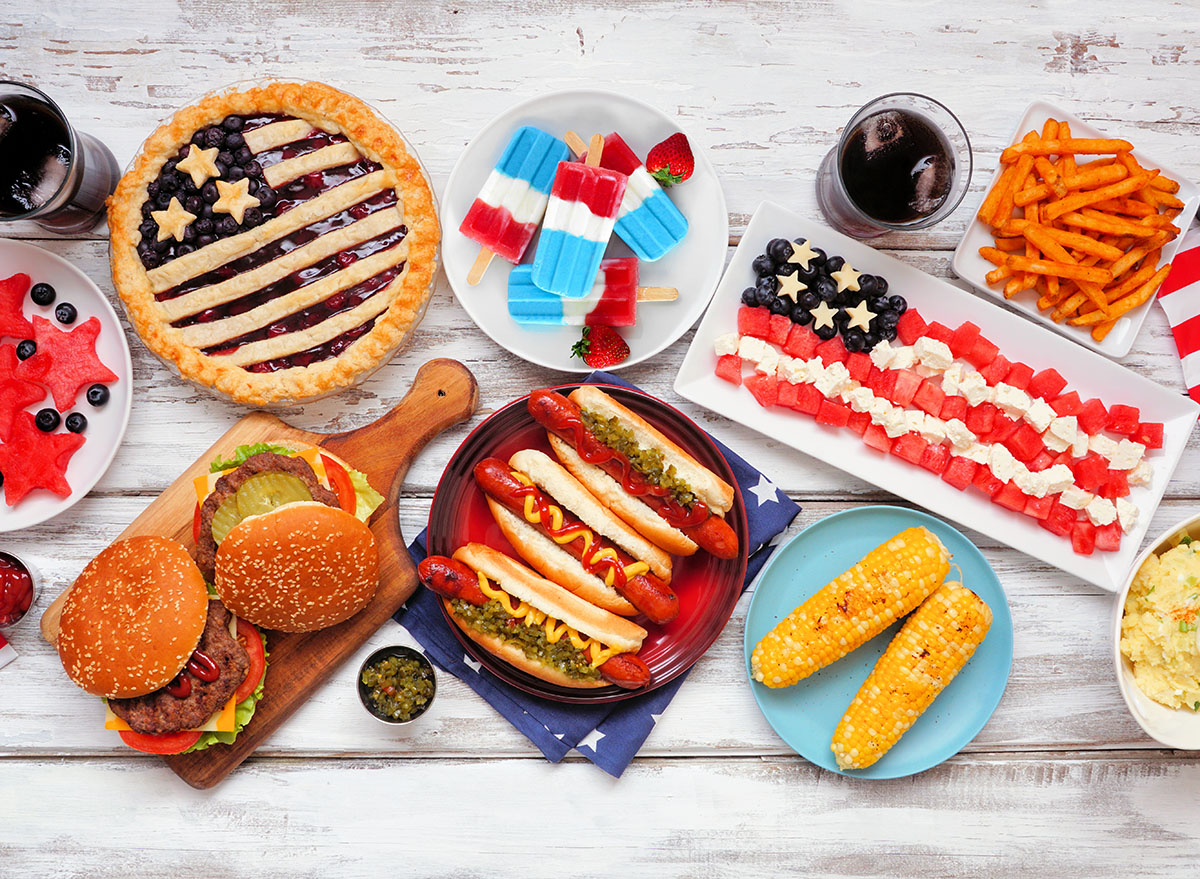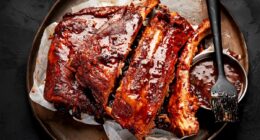Everyone’s heard of New York-style pizza, Detroit-style pizza, and Chicago-style deep-dish. Nowadays, Nashville-style hot chicken is as well-known as New Orleans-style beignets and Philly cheesesteaks, while lobster rolls, Cuban sandwiches, and Buffalo wings have transcended borders to become famed comfort foods well beyond their origins. And yet, the U.S. is still brimming with regional foods that most foodies have never heard of.
With such deep culinary traditions and local foodways, coupled with the vast differences between geographic growing seasons and farming rituals, it’s no wonder the sheer breadth of regional specialties, and the fact that, while some dishes rise to national prominence, others remain esoteric, under-the-radar delicacies that are still largely confined by state borders. From a doughy Appalachian snack to a gooey Midwestern cake, here are 10 must-try regional foods you’ve never heard of, but need to eat.
Pepperoni Rolls in West Virginia
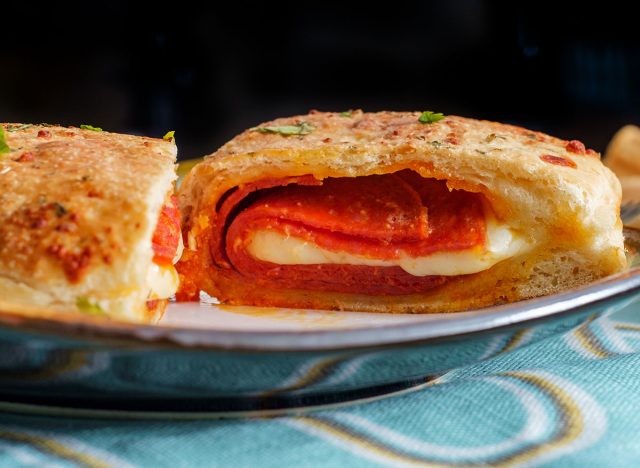
You’ve heard of Pizza Rolls, but how about pepperoni rolls? The official state food of West Virginia, they’re a simple snack comprising thick slices of pepperoni enrobed in rustic country-style rolls. Like much of West Virginia lore, pepperoni rolls trace their roots back to the coal industry, as some of the state’s earliest miners were Italian immigrants. In order to stay nourished during their long, grueling hours, the miners crafted pepperoni rolls as a hearty snack that they could keep on hand — and easily eat with one hand on-the-go. They hit the mainstream in the 1920s, when Calabria-born Giuseppe Argiro introduced them to the masses at his bakery in Fairmont.
That bakery, Country Club Bakery, remains open today, and one of the foremost destinations to try a classic pepperoni roll. Pepperoni rolls vary in style, and can be found throughout the state, including spots like Bolivar Bread Bakery in Harpers Ferry, Rogers and Mazza’s Italian Bakery in Clarksburg, and Chico Bakery in Morgantown.
Sonoran Hot Dogs in Arizona

Much like burgers and barbecue, hot dogs are a classic American comfort food with its fair share of regional variation. Chicago-style hot dogs and Detroit-style Coney dogs are a couple iconic standouts, along with New York-style traditions, but one regional rendition well worth a detour is the Sonoran hot dog found in southern Arizona. A culinary staple in and around Tucson, they’re bacon-wrapped hot dogs served in thick bolillo-style buns, and accompanied by toppings like pinto beans, tomatoes, mayo, onions, salsa, and mustard. A full-blown meal, and typically quite a bit larger than typical hot dogs, they’re found all over southern Arizona, from quick-service restaurants and mini chains, to food trucks aplenty.
El Guero Canelo is a popular go-to, even winning an America’s Classic Award from the James Beard Foundation in 2018. Other favorites include Aqui Con El Nene, which uniquely melts cheese onto their buns, and El Kora Hot Dogs, which serves their dogs with fried bacon-wrapped jalapeños. Rollies is another local favorite, putting its stamp on Sonoran tradition by topping its bacon-wrapped hot dogs with cheese crisp, caramelized onions, chile verde, mustard, salsa verde, and mayo.
Chislic in South Dakota
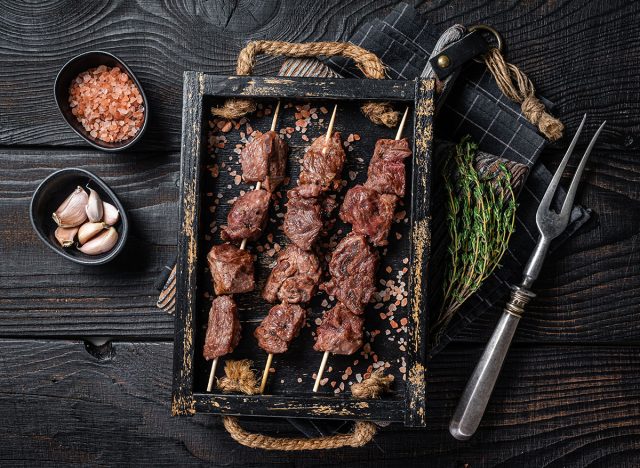
The official “State Nosh” of South Dakota, chislic is a meaty morsel that grew to particular popularity in the southeastern section of the state, where the town of Freeman — considered to be the heart of the “Chislic Circle” — hosts an annual South Dakota Chislic Festival. But what is chislic? Outside of South Dakota, this little-known nosh typically features wooden skewers of half-inch-thick cubes of meat, which are then either grilled or fried. The meat runs the gamut, from bison and beef, to venison and mutton, prepared simply and seasoned similarly, with a sparse sprinkle of garlic salt and crackers to accompany.
It all stems from German immigrants who settled in the region in the late-1800s, and brought their skewered traditions with them. Unlike back home, where wood fires were the primary heat source for such snacking, South Dakota’s comparatively treeless plains necessitated a bit of culinary improv, which is where fried chislic came into play. Today, the skewered snack can be found on menus all over the state, from frills-free sports bars to historic taverns and seasonally driven restaurants. Some of the more popular stops include The Barrel House in Sioux Falls and Buglin’ Bull in Custer, while Meridian Corner is an institution in Freeman.
Onion Burgers in Oklahoma
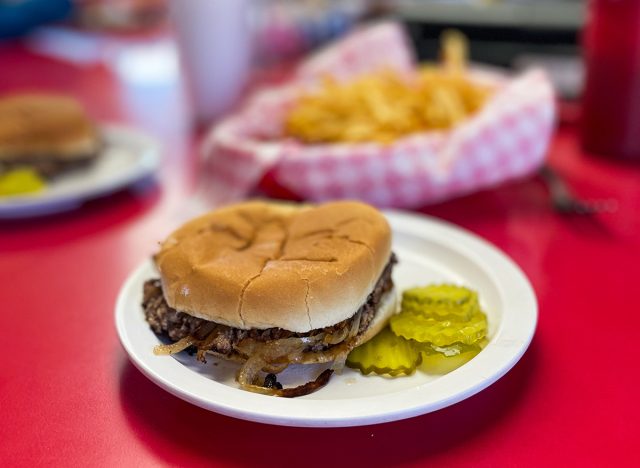
From New Mexico to Wisconsin, regional burgers dot the entire map of the U.S., but one specific specialty has an endearingly humble origin story. Oklahoma-style onion burgers first emerged in the 1920s in El Reno, a western suburb of Oklahoma City. Here, savvy grill cooks started to make thin beef patties smashed with a heap of slivered onions, as a way to save money and bulk up their products with more affordable ingredients during the Great Depression. The result proved not only to be economical, but delicious, and El Reno remains a pilgrimage destination for burger connoisseurs.
Robert’s Grill is a modest diner that’s been serving onion burgers since 1926, while Sid’s Diner and Johnnie’s Hamburgers & Coneys sport their own dedicated fan bases. At each institution, the familiar sizzle of onions on the griddle is all a part of the lore, and burgers are served sparsely with a drizzle of mustard and maybe a couple pickle slices. Today, modern onion burgers have begun popping up on local menus, including at Sun Cattle Co. in Oklahoma City, while Tucker’s Onion Burgers has emerged as a local mini-chain.
Goetta in Ohio
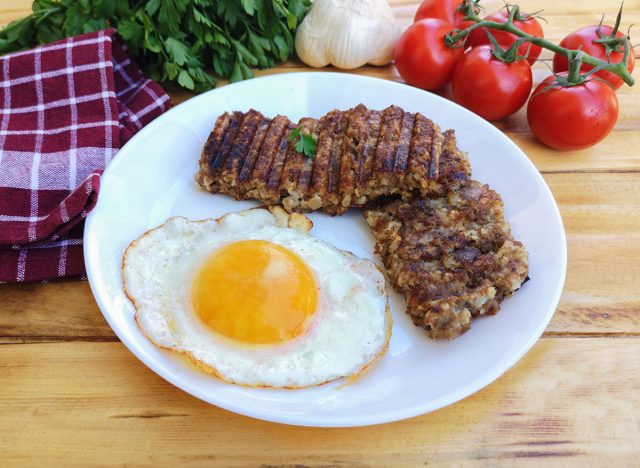
Cincinnati is the rare city that has more than one local specialty. Cincinnati-style chili is the more well-known export, as seen at fast-food chains like Skyline Chili, but for a deeper dive into Midwestern foodways, you gotta try goetta. Another tradition brought by German immigrants, goetta is a sausage-like item, often made with a blend of ground pork or beef, oats, onions, and spices — shaped into a patty, and typically fried and eaten for breakfast. Similar to the origins of onion burgers, goetta emerged out of economic necessity, when German immigrants stocked up on meat scraps from local butcher shops, to hobble together a snack that could replicate comfort food back home.
Today, goetta can be found in all manner of shapes and styles across the Cincinnati region. The iconic Findlay Market is a great place to find it straight from the butchers, while local restaurants put their own stamp on tradition. For an old-school institution, Blue Jay Restaurant is a great place to sample goetta at its most traditional, or you can get creative at French Crust Bistro, where a puff pastry comes with goetta, poached egg, piperade, and hollandaise. There’s even an annual Goettafest, held late-July and early-August.
Hot Browns in Kentucky
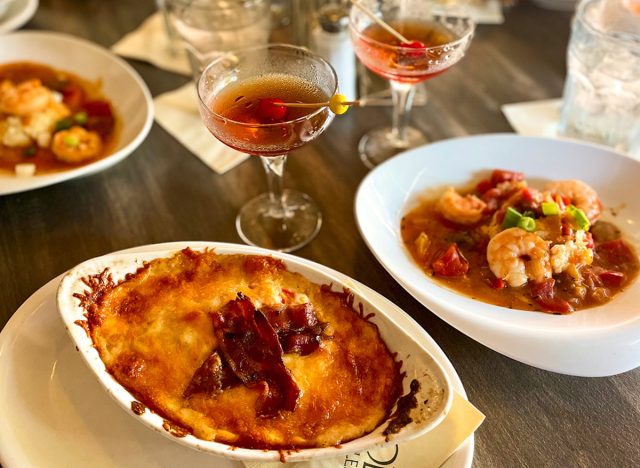
The list of regional American sandwiches is a lengthy one. But one sandwich, which simultaneously defies the form and raises the bar, is an extra-cheesy innovation out of Louisville, Kentucky. The hot brown was first invented at, fittingly, the Brown Hotel in 1926. Fred K. Schmidt is its credited creator, who first thought to wrangle together an open-faced sandwich with thick Texas-style toast, turkey, Mornay sauce, bacon, and tomatoes. Once regulars at the hotel eventually tired of the typical menu items, the chef got crafty with ingredients he had on-hand, and thus was born the hot brown — a direct result of a little late-night culinary dexterity.
The hot brown is still a menu highlight at the Brown Hotel, at both of its restaurants, its bar, and for room service. But the open-faced sandwich has become such a Louisville signature that it can be found on menus all over town, including Bristol Bar & Grille, Biscuit Belly, and the legendary Wagner’s Pharmacy.
Chocolate Gravy in Arkansas

Biscuits and gravy have become omnipresent in Southern cuisine, spanning numerous regions and states. But in the Arkansas Ozarks, one sweet riff distinguishes itself from the rest. Chocolate gravy, a rich and redolent spin on the breakfast tradition, is a little-known specialty that is said to have originated in Arkansas’ mountainous region, potentially the creative result of trade between the Tennessee Valley and Spanish settlers in Louisiana. Some of said settlers brought chocolate with them, prompting some gravy-makers to get crafty with newly available ingredients. Most recipes are made with flour, cocoa powder, sugar, and milk, with butter and bacon grease used interchangeably as the fat. Chocolate gravy, while sweet and decadent, has most commonly been eaten as a breakfast food, poured over biscuits or pancakes.
At Sugar and Crumbs Cafe in Eureka Springs, Arkansas, customers can order pancakes with chocolate gravy, while Bobby’s Cafe in North Little Rock — and Wagon Wheel in Greenbrier — are two old-school institutions that famously feature biscuits with chocolate gravy.
Runzas in Nebraska
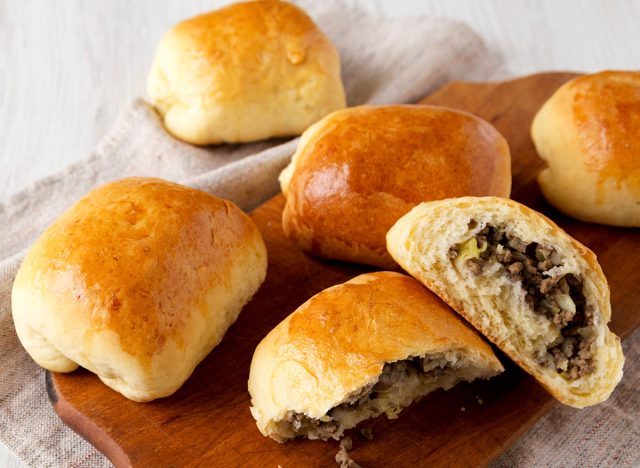
One of the few regional foods to have its own full-blown regional fast-food chain, runzas are another dish introduced by German-Russian immigrants. This time, not dissimilar to West Virginia’s pepperoni rolls, they brought rolls stuffed with meat and cabbage. The exact roots of such a novelty are murky, but most connect the dots between runzas and pierogies. In some parts of Nebraska, and the adjoining Midwest, the meaty rolls — traditionally made with ground beef and cabbage, baked in rectangular yeast rolls — were called bierock.
It calcified its place in Nebraska history with the opening of the first Runza restaurant in Lincoln in the 1940s. Today, there are more than 80 fast-food locations, with a vast majority of them confined to Nebraska. The original Runza sandwich is still king, but the menu includes other variations, including one with cheese, another with mushrooms and Swiss, and a BBQ bacon version.
Gooey Butter Cake in Missouri
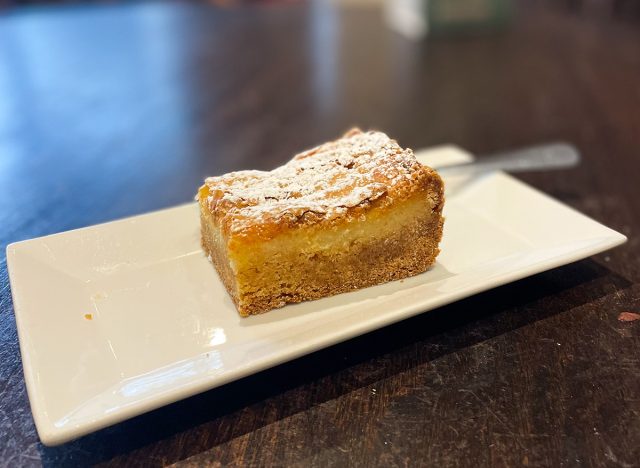
A happy accident, the invention of one of America’s most novel regional desserts came about when a German baker added the wrong proportions of ingredients for a cake recipe, resulting in something unintentionally…gooey. The aptly dubbed gooey butter cake, now a St. Louis tradition, is a dessert that features a bottom-layer crust covered with a gooey, sugary cake. The faux pas happened in the 1930s, and while the initial snafu was purely accidental, the results were undeniably and uniquely delicious. So much so that subsequent bakers, in the ensuing decades, have replicated it extensively across the city.
Treated more like a breakfast pastry than a dessert, gooey butter cake can be found in coffee shops and bakeries throughout St. Louis. Some of the most beloved versions can be found at Kaldi’s Coffee, Park Avenue Coffee, Gooey Louie Gooey Butter Cakes, and Yolklore, which offers nationwide shipping for whole cakes.
Maple Creemees in Vermont

Some might call it soft-serve ice cream. Unless you’re in Vermont, in which case it’s a creemee. Here, the dairy-loving state known for an ice cream empire specializes in an ice cream recipe so silken-smooth that it earned its whimsical moniker. Like many regional food oddities, the exact origins of the Vermont creemee aren’t precise, but foodie folklore attests it to the mid-1900s, when someone combined liquid ingredients into a machine that could freeze it all together, and produce a creamy confection. In the ensuing years, ice cream-makers added different flavors to their creemees, from classics like vanilla and chocolate, to the most famous of all: maple. Today, most creemees are made with a 5% butterfat content, ensuring a rich and creamy consistency that holds up well to Vermont maple syrup.
Maple creemees, specifically, are so prolific in Vermont that the state has its own Maple Creemee Trail, which highlights many of the places — from farms to ice cream shops — where folks can try the stuff. These include Allenholm Farm in South Hero, Canteen Creemee Company in Waitsfield, and Palmer Lane Maple in Jericho.

